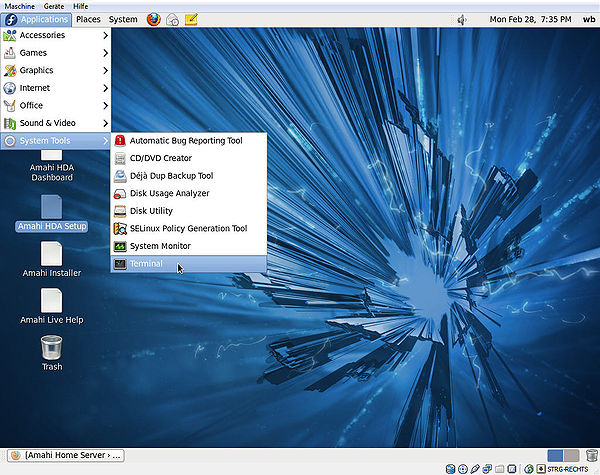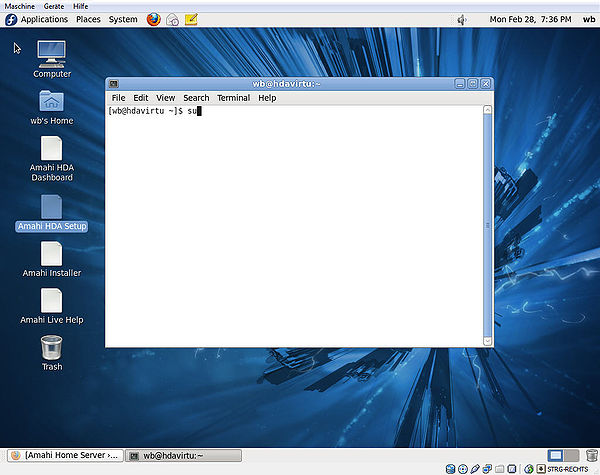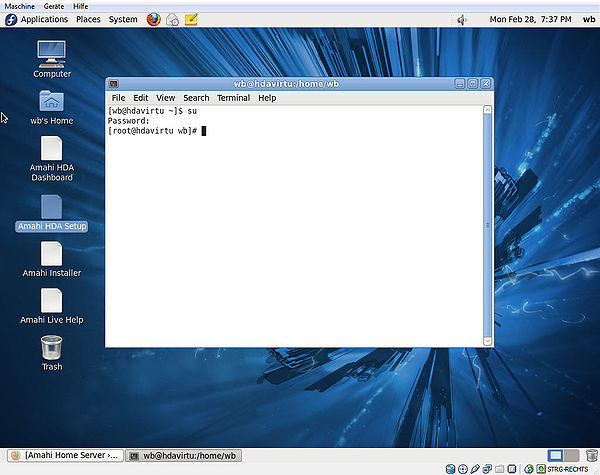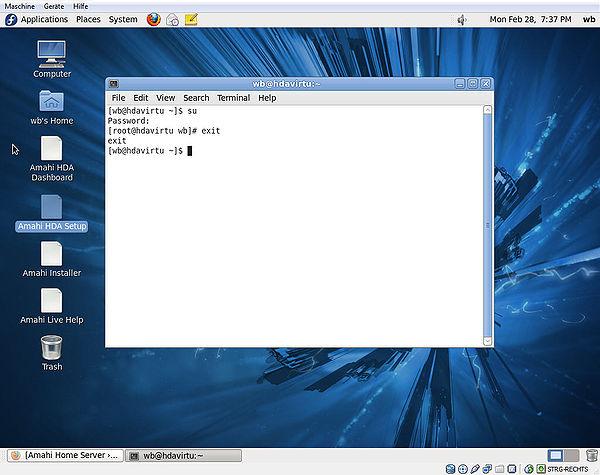Difference between revisions of "Root"
Moncapitaine (talk | contribs) m |
Moncapitaine (talk | contribs) m (added tags) |
||
| Line 1: | Line 1: | ||
| + | tags: root administrator permissions console terminal | ||
| + | Root can mean differrent things in Linux.<br> | ||
| + | The ''root partition'' is the partition with you system files in it.<br> | ||
| + | The ''filesystem root'' is the ground level of your filesystem, you can go in no deeper.<br><br> | ||
| + | The user ''root'' is the Linux equivalent (more or less) to the Windows | ||
| + | Administrator.<br><br> | ||
| + | |||
=== How to become root in a console === | === How to become root in a console === | ||
If you need root permissions, this is how to get them. | If you need root permissions, this is how to get them. | ||
| − | + | ||
1. Open a terminal ''aka'' console ''aka'' command prompt.<br> | 1. Open a terminal ''aka'' console ''aka'' command prompt.<br> | ||
[[File:open terminal.jpg|600px]]<br><br> | [[File:open terminal.jpg|600px]]<br><br> | ||
Revision as of 19:18, 7 March 2011
tags: root administrator permissions console terminal
Root can mean differrent things in Linux.
The root partition is the partition with you system files in it.
The filesystem root is the ground level of your filesystem, you can go in no deeper.
The user root is the Linux equivalent (more or less) to the Windows
Administrator.
How to become root in a console
If you need root permissions, this is how to get them.
1. Open a terminal aka console aka command prompt.

2. Enter the command su

You will be asked for the password of the user root, enter it.
If you come from Windows, do not expect to see anything while entering it.
When you look at the prompt, you will see that the user name has changed to root@hdavirtu, proof that you now have acquired root permissions:

3. Do whatever you needed the root permissions for.
4. When you are done, type exit

You'll notice by looking at the prompt that you are the standard user again.
